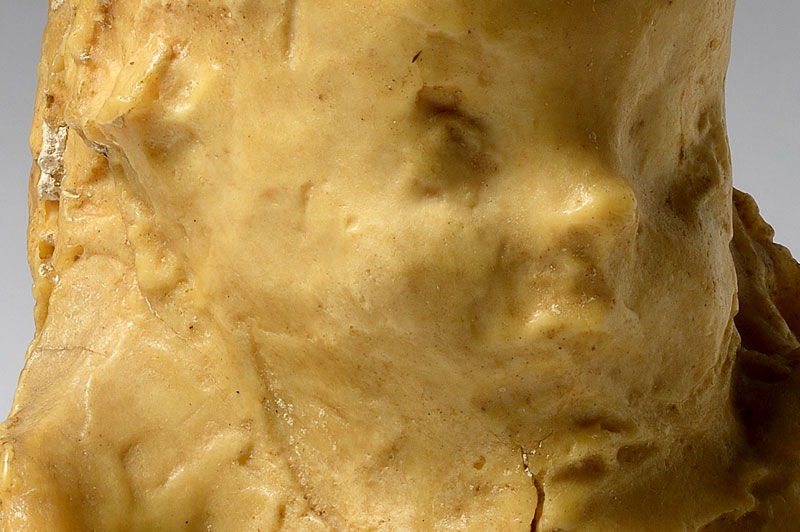In February 1906, Gertrude Blood wrote of Medardo Rosso as a sculptor ‘unknown to Londoners’ but whose exhibitions across Europe were ‘creating a furore among artists’. Little has changed. This exhibition of 12 sculptures and numerous drawings and photographs by the Italian-born artist is prefaced by a new work, In Frequencies, by Tony Cragg, who in the accompanying catalogue credits Rosso as the first modern sculptor.
‘Medardo Rosso: Sight Unseen and his Encounters with London’, installation view at Ely House, Galerie Thaddaeus Ropac. Photo: Prudence Cuming
It was Rosso’s handling of surface and materials in his anti-heroic busts of vulnerable subjects that earned him his reputation with modern artists. The first work in this exhibition, Child at the Breast (1890), is an amorphous sculptural mass, which seems to tumble forward from its plinth. Behind this bronze congregates a gaggle of sculptures borrowed from museums and private collections, one – Impression of a Boulevard (1895) – never previously exhibited.
The sight evokes Rosso’s Parisian studio of the 1890s, thanks to the casual elegance of its arrangement with plinths borrowed from the Museo Medardo Rosso in Barzio, made by the artist’s son in the 1930s. The display subsumes you into the crowd; fleeting glimpses of fellow spectators meld with visions of the sculptures’ complex surfaces.
Child in the Sun (1891–92), Medardo Rosso. Courtesy Amedeo Porro Fine Arts Lugano/London
Rosso experimented wildly with his sculptural materials, casting his own bronzes, and using plaster and wax – his signature materials – in unprecedented ways. The diversity found between the craggy surface of Madame Noblet (1897) and the smooth sealant-coated working plaster of Ecce Puer (Behold the Child) (1906) is even more apparent in the multiple wax-and-plaster versions of Child in the Sun (1891–92) and Jewish Boy (1893) on display.
Photograph of Child at the Breast (1890)
Surface experimentation is transposed to Rosso’s drawings. The hazy patchworks of light and shade formed by his plasters mutate into the soft smog of an out-of-focus picture. Rosso photographed his drawings as well as his sculptures, blurring the physical boundaries that his art sought to dematerialise. The drawings’ display, laid in a case alongside photographic variations, emphasises their sculpture-like three-dimensionality.
London’s spaces and inhabitants are glimpsed among these drawings, made during Rosso’s visit to the city in 1896. An apparent self-portrait is drawn on the stationery of a hotel near Leicester Square. A sheet showing Trafalgar Square has a watermark reading ‘Jermyn Street’. Ten years later Rosso gave a photograph of this drawing to artist and critic Ethel Fles, also his patron and mistress, marked with a cross to indicate where they should meet.
Photograph of the drawing Detectives in London, Medardo Rosso
It may come as a surprise to find this unprecedented contextualisation on Dover Street, rather than in a museum. Yet there is a rationale. It was a few doors down from Ely House, Galerie Thaddaeus Ropac’s new London site, that the Eugene Cremetti Gallery gave the artist his largest London exhibition in December 1906. One bronze, Laughing Woman (1890–1910s), comes from that show to this one, and many of the drawings included here were reproduced in the Cremetti catalogue.
Sensitively curated by Rosso expert Sharon Hecker with Ropac’s own Julia Peyton-Jones, ‘Sight Unseen’ may indicate the scale of the gallery’s ambitions in London – but, more pressingly, it shows Rosso’s own ambitious work and glimpses how valuable a museum outing would be.
‘Medardo Rosso: Sight Unseen’ is at Galerie Thaddaeus Ropac, London, until 10 February 2018.
